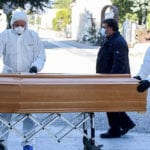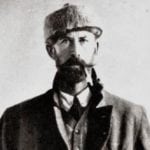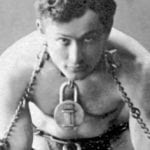 Mysteries
Mysteries  Mysteries
Mysteries  History
History 10 Surprising Stories About the Texas Rangers
 Humans
Humans 10 Philosophers Who Were Driven Mad by Their Own Theories
 Miscellaneous
Miscellaneous 10 Video-Game-Worthy Weapons and Armors from History
 Weird Stuff
Weird Stuff 10 Psychics Who Accurately Predicted Wartime Events
 The Arts
The Arts 10 Pieces of Art Inspired by a Broken Heart
 Health
Health 10 Science Fiction-Sounding New Medical Treatments
 History
History 10 Surprising Facts About the Father of Submarine Warfare
 Space
Space Ten Astonishing New Insights into Alien Worlds
 Weird Stuff
Weird Stuff 10 Bizarre Summer Solstice Rituals Still Practiced Today
 Mysteries
Mysteries Top 10 Haunting Facts About the Ghost Ship MV Alta
 History
History 10 Surprising Stories About the Texas Rangers
 Humans
Humans 10 Philosophers Who Were Driven Mad by Their Own Theories
Who's Behind Listverse?

Jamie Frater
Head Editor
Jamie founded Listverse due to an insatiable desire to share fascinating, obscure, and bizarre facts. He has been a guest speaker on numerous national radio and television stations and is a five time published author.
More About Us Miscellaneous
Miscellaneous 10 Video-Game-Worthy Weapons and Armors from History
 Weird Stuff
Weird Stuff 10 Psychics Who Accurately Predicted Wartime Events
 The Arts
The Arts 10 Pieces of Art Inspired by a Broken Heart
 Health
Health 10 Science Fiction-Sounding New Medical Treatments
 History
History 10 Surprising Facts About the Father of Submarine Warfare
 Space
Space Ten Astonishing New Insights into Alien Worlds
 Weird Stuff
Weird Stuff 10 Bizarre Summer Solstice Rituals Still Practiced Today
Top 10 Notable People Who Died From AIDS
AIDS is a disease of the human immune system caused by the human immunodeficiency virus (HIV). The condition progressively reduces the effectiveness of the immune system and leaves individuals susceptible to opportunistic infections and tumors. As of 2009, it is estimated that there are 33.3 million people worldwide infected with HIV. However, the majority of people with the virus don’t know they have it. For this reason, major inaccuracies exist in certain statistics. Millions of people die from AIDS-related diseases every year. The disease is devastating Africa. The continent is home to about 14.5% of the world’s population and 72% of all AIDS deaths in 2009.
In many areas of the world, the AIDS virus has become associated with the gay community. This is because a large percentage of notable people who have died from AIDS were homosexual. The link between being gay and AIDS is not well understood. In 1969, an American teenager from Missouri named Robert R. became the earliest confirmed victim of AIDS. It remains unclear how Robert got the virus. The first person known to have contracted HIV and died outside of the United States is Arvid Noe.
Since the spread of AIDS, hundreds of famous people have died from the disease. This article will examine ten notable cases (and, in time, will be followed up by a second list of ten). Everyone listed had an established and notable career before getting HIV. They were not made famous by the disease, like many activists that died during the 1980s and 1990s. For example, a woman named Kimberly Bergalis was the first person to get HIV from a clinical transmission. She received the virus from her dentist.
Some notable people not included are broadcast journalist Max Robinson, disco singer Sylvester, choreographer Alvin Ailey, French philosopher Michel Foucault, fashion icon Tina Chow, designer Willi Smith, Italian writer Pier Vittorio Tondelli, CEO of Hasbro Stephen D. Hassenfeld, French writer Jean-Paul Aron, and Spanish poet Jaime Gil de Biedma.
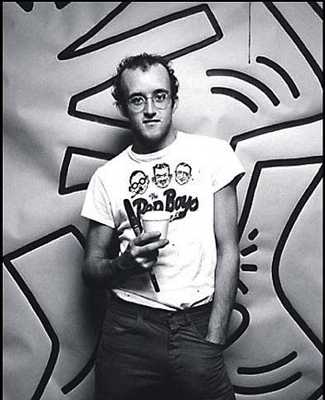
In 1958, Keith Haring was born in Reading, Pennsylvania. He achieved his first public attention with chalk drawings in the subways of New York. To make his art recognizable, Haring used a Radiant Baby symbol. He used bold lines, vivid colors, and active figures to carry strong messages of life and unity. In 1985, Keith started to paint canvas. He made an appearance on MTV in November 1985 and painted the set during a show hosted by his friend, keyboardist Nick Rhodes of Duran Duran. In 1986, Haring painted murals in Amsterdam, Paris, and Phoenix. He was also asked to paint a 350 foot mural on the Berlin Wall at Brandenburg Gate.
Keith Haring spoke about his work on the Berlin Wall. “I decided on a subject, which is a continuous interlocking chain of human figures, who are connected at their hands and feet. The chain represents the unity of people against the idea of the wall. I painted in the colors of the German flag, black, red and yellow.”
Toward the end of the 1980s, Keith’s art began to reflect socio-political themes, such as anti-Apartheid, AIDS awareness, and the crack cocaine epidemic. In 1988, he was diagnosed with AIDS. It remains unclear exactly how Haring got HIV, but it has been speculated that he received the virus through unprotected sexual intercourse or drug use. A collection of people that Haring was acquainted with died from AIDS. This includes model Tina Chow, who was one of the first heterosexual women to become infected with the disease. Chow died from an AIDS related illness January 24, 1992.
Haring was a homosexual man. In 1989, he established the Keith Haring Foundation to fund AIDS research and children’s programs. Keith Haring died on February 16, 1990, of AIDS-related complications. He was only 31 years-old. Keith’s last public work was painted on the rear wall of the convent of the Church of Sant’Antonio in Pisa, known as the mural Tuttomondo. His imagery has become a recognized visual language of the 20th century.
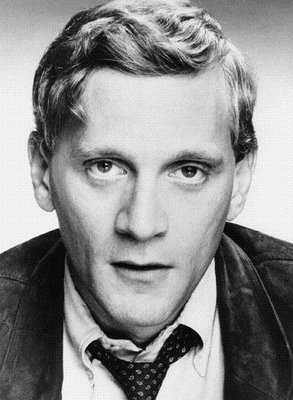
In 1950, Howard Ashman was born in Baltimore, Maryland. In the 1970s, Ashman began to stand out as a talented playwright, lyricist and director. He first worked with Alan Menken on a 1979 musical adapted from Kurt Vonnegut’s God Bless You, Mr. Rosewater. They also collaborated on the successful Little Shop of Horrors rock musical. Menken would compose the music, while Ashman wrote the lyrics. Towards the end of the 1980s, the pair turned their attention to animated features produced by Walt Disney.
Howard Ashman wrote the lyrics for all the songs used in The Little Mermaid and Beauty and the Beast. At the time of his death, Ashman was in the middle of working on Aladdin. Three of his songs were featured, Arabian Nights, Friend Like Me, and Prince Ali. Along with Menken, Ashman is the co-recipient of two Grammy Awards, two Golden Globe Awards and two Academy Awards. His second Academy Award, in 1992, was awarded posthumously for Best Original Song (Beauty and the Beast). In the middle of the 1980s, Howard Ashman was diagnosed with HIV. After a long fight with the disease, he passed away from complications on March 14, 1991.
Howard Ashman was a homosexual. His life partner was a man named William P. Lauch, who joined Menken in accepting Ashman’s posthumous Academy Award. In a moving speech, Lauch proudly declared, “Howard and I shared a home and a life together.” He went on to note that this was “the first Academy Award given to someone lost to AIDS.” In 2001, Ashman was named a Disney Legend. The movie Beauty and the Beast is dedicated in his honor. “To our friend Howard, who gave a mermaid her voice and a beast his soul, we will be forever grateful.”
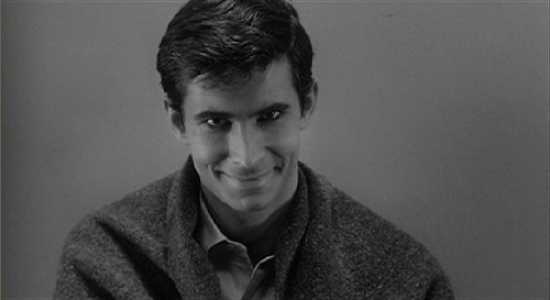
In 1932, Anthony Perkins was born in New York City. He made his film debut in the movie The Actress (1953). In 1957, Perkins received an Academy Award nomination for his role in Friendly Persuasion. He also won the Golden Globe Award for New Star of the Year. In the late 1950s, Anthony Perkins released three pop music albums as “Tony Perkins.” His single Moon-Light Swim was a hit in the United States, peaking at #24 on the Billboard Hot 100. Perkins also acted in theater and received a collection of Tony Award nominations.
In 1960, Anthony Perkins landed his most notable role, as Norman Bates in the Alfred Hitchcock film Psycho. The movie was a critical and commercial success, and gave Perkins international fame for his performance as the homicidal owner of the Bates Motel. In 1961, Perkins won the best actor award at the Cannes Film Festival for his role, in Goodbye Again. In 1976, he hosted television’s Saturday Night Live and was featured in his only science fiction film, the box office smash and space opus, Walt Disney’s The Black Hole in 1979.
Perkins reprised the role of Norman Bates in three sequels to Psycho. The first, Psycho II (1983), was a box office success more than 20 years after the original film. He then starred in, and directed, Psycho III. In 1990, Perkins played Bates in the made-for-cable sequel Psycho IV: The Beginning. Anthony Perkins was given a star on the Hollywood Walk of Fame to honor his exceptional contributions to the motion picture industry.
Perkins was diagnosed with AIDS in 1989, and kept his illness a closely-guarded secret for fear that he would not be able to get an acting role. Despite his illness, Perkins worked until the very end. He died on September 12, 1992, from pneumonia related to AIDS. At the time of his death, Anthony had been married to photographer Berry Berenson for 19 years and had two children. Perkins was reported to have been bisexual, and had a close relationship with actors Rock Hudson and Tab Hunter, and dancer Rudolf Nureyev. Anthony’s widow, Berry Berenson, was killed on American Airlines Flight 11 during the September 11 terrorist attacks.
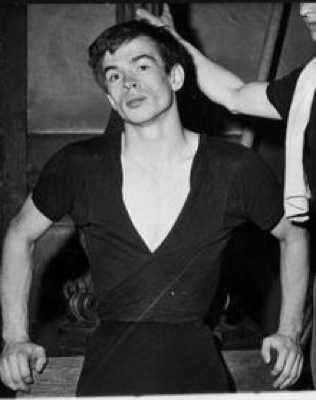
In 1938, Rudolf Nureyev was born, on a train near Irkutsk, Siberia, USSR. By the late 1950s, he had become a dancing sensation in the Soviet Union. Nureyev was chosen as part of the Kirov ballet European tour. While in Paris, his performances electrified audiences and critics. Rudolf Nureyev was a free spirit and he was known for breaking Soviet rules about mingling with foreigners. For this reason, he was under investigation by the KGB and faced possible arrest.
On June 16, 1961, at the Le Bourget Airport in Paris, Nureyev defected, with the help of French police. Within a week of his defection, he was signed by the Grand Ballet du Marquis de Cuevas. Nureyev was openly gay. While on tour in Denmark, he met Erik Bruhn, a fellow dancer who became his lover and closest friend. In 1962, Nureyev was signed by The Royal Ballet as their Principal Dancer. He continued to perform regularly with The Royal Ballet until he joined the Paris Opera Ballet, in the 1980s.
When AIDS appeared in France around 1982, Nureyev took little notice and did not change his lifestyle. He simply denied anything was wrong with his health. In 1990, Rudolf became undeniably ill. His last performance was in the production of La Bayadère at the Palais Garnier. In 1993, Rudolf Nureyev died in Levallois-Perret, from an AIDS-related illness. He was 54-years-old. Rudolf is considered one of the most celebrated ballet dancers of the 20th century. He provided a new role for the male ballet dancer who once served only as support to the women.

In 1951, Esteban De Jesús was born, in the town of Carolina, Puerto Rico. He debuted as a professional boxer in 1969, beating El Tarita by a knockout. De Jesús won his first 20 amateur fights in the lightweight division, 13 by knockout. In 1971, De Jesús boxed Josue Marquez and beat him in a ten round decision. By the end of 1972, De Jesús’ had won six professional fights in a row. Despite all those wins, he was virtually unknown to most fans. That changed when Esteban faced undefeated Roberto Durán, in November 1972. The fight was at Madison Square Garden arena in New York. It marked the beginning of the Duran vs. De Jesús trilogy, De Jesus dropped Duran in round one and went on to give Duran his first professional defeat with a ten round decision.
Esteban De Jesús began 1974 by knocking out former world Jr. Welterweight champion Alfonso Peppermint Fraser in 10 rounds. He then faced Duran for the second time and knocked him down in the first round, but this time Duran rebounded and dominated the fight. In 1976, the WBC’s world Lightweight champion Ishimatsu Suzuki of Japan traveled to Puerto Rico to defend his title against De Jesús. It was the third world title chance for Esteban. He won the fight by beating Suzuki in a 15 round decision. He then retained the title against Hector Medina by a knockout in seven.
As a world champion, De Jesús defended his title over the next couple years. In early 1978, he faced Duran for the third time. It was a WBC Lightweight title bout in Las Vegas, which displayed Duran’s talents at their peak. Duran systematically broke down De Jesús and won in a 12th round knockout. Esteban De Jesús was the WBC Lightweight World Champion from May 1976 to January 1978. Esteban retired from boxing with a record of 57 wins and 5 losses, with 32 wins by knockout.
The next stage of Esteban’s life began on Thanksgiving weekend, 1981. In what became a famous case in Puerto Rico, De Jesús was convicted of murder after shooting and killing a 17 year-old over a traffic dispute. He was sentenced to life in jail. While in prison, De Jesús was infected with HIV. It is unclear exactly how he got the disease, but unprotected sex or drug use is likely. After it became public that De Jesús had acquired HIV, Governor Rafael Hernández Colón pardoned him. De Jesús returned to his house and was visited by many celebrities in his final days, including Duran. “It was a compassionate moment when Duran lifted De Jesús out of his bed and kissed him.” On May 11, 1989, Esteban De Jesús died from AIDS-related complications. He was only 37 years-old.
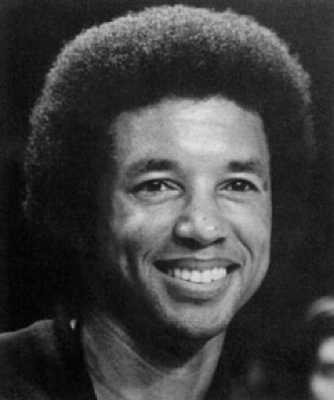
Arthur Ashe was a professional tennis player, born and raised in Richmond, Virginia. During his career, Ashe won three Grand Slam titles, putting him among the best players ever from the United States. In 1963, Arthur became the first black player ever selected to the United States Davis Cup team. He won the inaugural US Open in 1968, the Australian Open in 1970, and Wimbledon in 1975. Arthur had heart surgery in 1979 and retired in 1980.
Arthur Ashe remains the only black man to ever win the singles title at Wimbledon, the US Open, or Australian Open. He is one of only two black men to win a Grand Slam singles title, the other being France’s Yannick Noah, who won the French Open in 1983. Arthur was elected to the International Tennis Hall of Fame in 1985. In 1979, he suffered a heart attack and underwent a quadruple bypass surgery, performed by Dr. John Hutchinson. In 1983, Ashe underwent a second round of heart surgery to correct the bypass. Five years later he fell ill and it was discovered that Arthur had contracted HIV.
Ashe apparently got HIV from a tainted blood transfusion he received during his second heart procedure. Arthur and his wife decided to keep his illness private, until April 8, 1992, when reports on his health were published. By 1992, Arthur’s physical appearance was skinny and gaunt. In the last year of his life, Ashe started an AIDS foundation. He died from AIDS-related pneumonia on February 6, 1993. Arthur Ashe remains one of the most famous individuals to have received HIV from a tainted blood transfusion.
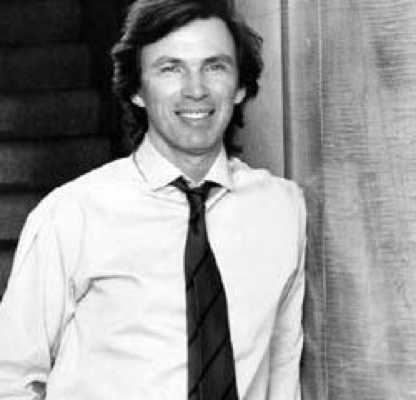
Perry Ellis was born in Portsmouth, Virginia, on March 3, 1940. In the middle of the 1970s, Ellis was approached by his then employer, The Vera Companies, famous for their polyester double-knit pantsuits, to design a fashion collection. Soon after that, Perry Ellis presented his first women’s sportswear line, called Portfolio, in November 1976. By 1978, Perry Ellis was internationally recognized. His clothing line became loved by female consumers for the clean-cut yet casual style.
In 1978, Ellis founded his own sportswear fashion house, Perry Ellis International. As the company’s chairman and head designer he developed a popular Menswear Collection. Step by step, Perry Ellis added shoes, accessories, furs and perfume. Throughout the 1980s, the company continued to expand and include various labels. In the early 1980s, the wholesale revenues for Perry Ellis International had figured at about $60 million. By 1986, that number had risen to about $250 million.
Today the company is huge. Perry Ellis International is a leading designer, distributor and licensor of apparel and accessories for men and women. The company owns or licenses a portfolio of brands that includes 29 of the leading names in fashion. Perry Ellis became publicly shared in 1993, and annual sales have propelled to nearly $1 billion dollars.
In the middle of the 1980s, Perry Ellis became seriously ill. He died on May 30, 1986, aged 46, from viral encephalitis – an AIDS-related disease. He was openly gay. In November 1984, Barbara Gallagher, a Hollywood screenwriter and long-time friend of Perry gave birth to their daughter Tyler. However, a man named Laughlin Barker was his long-time partner. Barker also died in 1986. Perry Ellis was one of the first prominent American figures to succumb to AIDS.
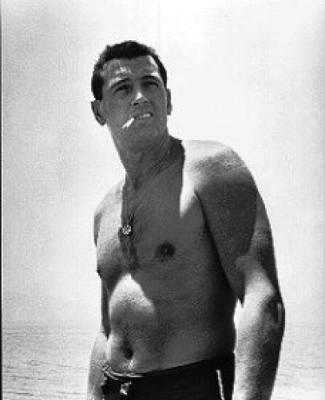
Rock Hudson was an American film and television actor. During the 1950s and 1960s, Hudson played the lead role in many romantic comedies, most notably acting with Doris Day. He was a tall man standing at 6 ft 5 in (1.96 m). Hudson appeared in nearly 70 motion pictures, and several television productions, during a career that spanned over four decades. From 1971 to 1977, Rock starred in the lighthearted American crime series McMillan & Wife. At this time, he was the highest paid actor on television.
In the early 1980s, following years of heavy drinking and smoking, Hudson began to experience health problems which resulted in a heart attack. He underwent emergency quintuple heart bypass surgery, in November 1981. By 1984, Rock’s health began to get worse, which prompted rumors that he was suffering from liver cancer. He displayed an increasingly gaunt face and build.
Rock was diagnosed with HIV on June 5, 1984. He kept his illness a secret while continuing to work and attend Hollywood gatherings. It was not until July 25, 1985, while in Paris for treatment, that Hudson issued a press release announcing that he was dying of AIDS. In another press release a month later, Rock speculated that he might have contracted HIV through an infected blood transfusion that occurred during his heart bypass procedure.
Rock Hudson died on October 2, 1985, from an AIDS-related illness. He was a month and a half away from his 60th birthday. The disclosure of Hudson’s HIV status provoked widespread discussion on his sexual orientation, which was never made public. Rock and his agent, Henry Willson, kept his personal life out of the headlines. According to some colleagues, Hudson’s homosexuality was well known in Hollywood throughout his career. Rock Hudson was one of the first major Hollywood celebrities to die from an AIDS-related illness. His death had an immediate impact on the visibility of AIDS and on the funding of medical research.
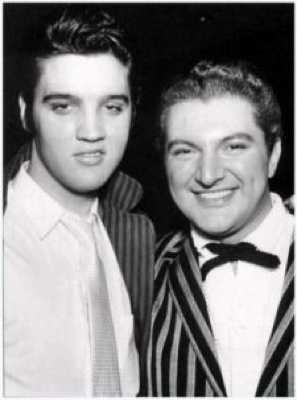
In 1919, Liberace, known as Lee to his friends, was born in West Allis, Wisconsin. Liberace began playing the piano at the age of four, and memorized difficult pieces of music by seven. As a youth, Liberace focused fiercely on the piano, and blossomed under the instruction of music teacher Florence Kelly. He showed an interest in draftsmanship, design, painting, and became a lover of fashion. Liberace had a knack for turning his eccentricities into attention-getting virtues, similar to Elton John, David Bowie, Madonna and, more recently, Lady Gaga. By 1947, Lee was billing himself as “Liberace – the most amazing piano virtuoso of the present day.” He bought a rare, over-sized, gold-leafed Blüthner Grand, which he hyped up as a “priceless piano.”
Liberace created a very successful public image which helped rocket him to stardom. His New York City performance at Madison Square Garden, in 1954, earned him a record $138,000 for one show. By 1955, he was making $50,000 per week at the Riviera Hotel and Casino in Las Vegas. Liberace was also making over $1,000,000 per year from public appearances, and millions from television. He was frequently covered by the major magazines and became a pop culture superstar. The pianist’s flamboyant personality made him the butt of jokes by comedians and the public.
In the 1970s and early 1980s, Liberace’s live shows were a major box office attraction in Las Vegas, and he made $300,000 a week. During the 1950s–1970s, Liberace was the highest-paid entertainer in the world. In 1982, Scott Thorson, Liberace’s 24-year-old bodyguard, limo driver, and alleged live-in boyfriend of five years, sued the pianist for $113 million in palimony. In response, Liberace denied he was gay. Confusion over Liberace’s true sexuality was further muddled in the public’s mind by his romantic links with a collection of famous personalities.
Liberace’s final stage performance was at New Yorks’ Radio City Music Hall, on November 2, 1986. His final 21 day tour grossed $2.5 million. Liberace died at the age of 67 on February 4, 1987, from cardiac arrest due to congestive heart failure. He never officially gave a statement saying that he was HIV positive or a homosexual. The pianist was diagnosed with AIDS in 1986, and was hospitalized in January of 1987 with suspected anemia. An autopsy following his death confirmed that Liberace had HIV.
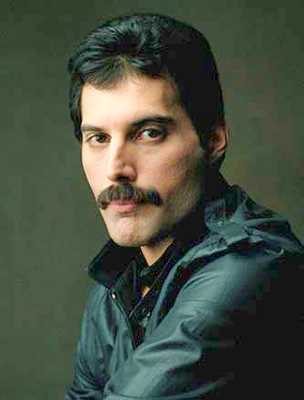
Freddie Mercury (Farrokh Bulsara) was born in the British protectorate of Zanzibar, East Africa (now part of Tanzania). In April 1970, Mercury joined guitarist Brian May and drummer Roger Taylor to form the band Queen. Despite reservations from the other members, Mercury is the one who chose the band’s name. He later said about the decision, “I was certainly aware of the gay connotations, but that was just one facet of it.” As a performer, Freddie Mercury was known for his flamboyant stage persona and powerful vocals over a four-octave range. His speaking voice fell in the baritone range, but Mercury delivered most songs in the tenor range.
Mercury wrote 10 of the 17 songs on Queen’s Greatest Hits album, including Bohemian Rhapsody, Somebody to Love, We are the Champions and Killer Queen. He was known for his live performances, which were often given to stadium sized audiences. Over the course of his career, Mercury performed an estimated 700 concerts. He played the piano in many of Queen’s most famous songs. To date, Queen has released a total of 18 number one albums, 18 number one singles, and 10 number one DVDs. Queen has sold over 150 million albums worldwide, with some placing the estimate closer to 300 million.
When Freddie Mercury was not performing he was a very shy and retired man. Mercury was a bisexual, but he did not like to speak about his relationships. He was diagnosed with HIV in April of 1987. Freddie decided to hide his HIV status from the public for several years. By 1990, his physical appearance began to change. On November 23, 1991, Mercury gave a public statement indicating that he had contracted the AIDS virus. A little over 24 hours later, Freddie Mercury died, on the evening of November 24, 1991, at the age of 45, at his home in Kensington. The official cause of death was bronchial pneumonia resulting from AIDS. Mercury was the first major rock star to die of AIDS. There is little doubt that he has one of the greatest voices in music history.
